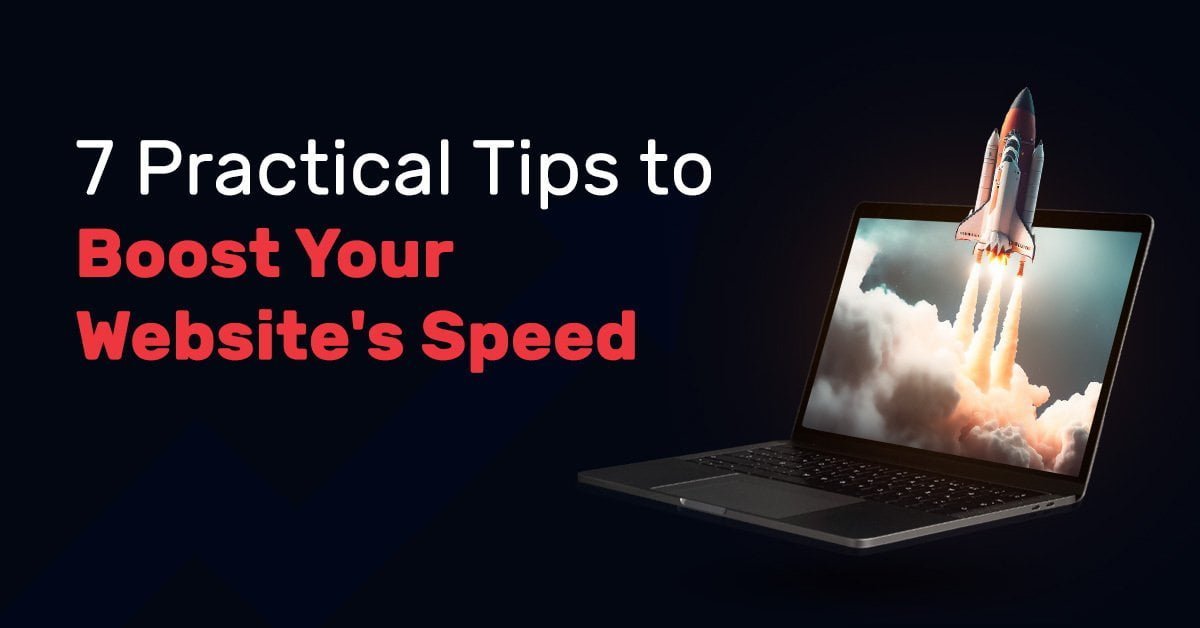Here in this article, we give you tips to boost your website’s speed. In today’s digital age website speed plays a critical role in user satisfaction and engagement. Slow-loading websites can frustrate users and lead to higher bounce rates. To prevent this, optimizing your website’s speed is essential. This article offers seven actionable tips to accelerate your website’s load times and create a seamless user experience. Additionally, we’ll introduce a few more strategies to further enhance your site’s performance.
1. Mindful Use of Animations
While animations can enhance your website’s visual appeal, excessive or large animations can lead to slower load times. Start with smaller, lightweight animated elements to ensure a smooth loading experience. As you become comfortable with animations, gradually incorporate more complex effects. Focus on creating animations that have a minimal impact on load times, such as hover states, AJAX, and parallax animations that load gradually while users scroll.
2. Optimize Images for Efficiency
High-resolution images may look impressive, but they can significantly slow down your website’s performance. Optimize images by compressing images to reduce file size Striking a balance between image quality and load time is essential. For instance, choose JPG for photos, PNG for images with text, GIF for small animations, and SVG for vector images. Using appropriate file formats (JPG, PNG, GIF, SVG) and resizing images to fit your website’s layout.
3. Implement Code Wisely
Efficient coding practices can contribute to faster load times. Utilize CSS to load background images and icons. This approach prioritizes the loading of essential elements, allowing users to access content promptly. Embrace CSS and JavaScript libraries, like Font Awesome icons and lightweight frameworks, to enhance your site’s functionality without compromising speed.
4. Opt for Short Videos
Full-screen videos can engage users, but lengthy videos can hinder load times. Opt for brief, looped videos that maintain action without compromising speed. Consider techniques like color overlays or blurs to reduce video size. Avoid autoplay to ensure that your site loads efficiently, allowing users to initiate video playback when they’re ready.
5. Evaluate Your Theme
If you’re using a content management system with a theme, ensure that it’s optimized for speed. Premium themes often offer features to disable unnecessary elements, optimizing load times. Examine the theme’s code and structure to identify potential bottlenecks that might hinder your site’s performance.
6. Manage Plugins Effectively
Plugins and third-party applications can impact your site’s speed. Keep only essential plugins active and disable unused ones. WordPress users can leverage tools like the Plugin Performance Profiler to assess plugin efficiency and troubleshoot any performance issues caused by plugins.
7. Embrace Compression Techniques
Compression is a powerful technique to boost your site’s speed. Consider these approaches:
- Compress CSS and JavaScript files
- Resize images and videos
- Use tools like GZIP to compress the entire site. Compressing individual components and the entire site reduces load times and improves user experience.
Additional Strategies for Enhanced Website Performance
Beyond the core tips mentioned above, here are a few additional tips to boost your website’s speed to supercharge your website’s speed:
1. Prioritize Content Delivery Networks (CDNs)
CDNs distribute your website’s content across multiple servers worldwide, reducing the distance between users and your server. This significantly speeds up content delivery and improves load times for users across different locations.
2. Optimize Server Response Time
A slow server response time can hinder website speed. Choose a reliable hosting provider with fast server response times. Consider optimizing database queries and utilizing caching mechanisms to further enhance response times.
3. Enable Browser Caching
Browser caching allows frequently visited elements of your site to be stored on users’ devices. This minimizes the need for repeated downloads, resulting in faster load times for returning visitors.
Conclusion: Elevate User Experience with Lightning-Fast Load Times
Enhancing your website’s speed is crucial for delivering a seamless and enjoyable user experience. Slow-loading sites can deter users and impact your site’s performance. By implementing these seven practical tips, along with additional strategies like CDNs, optimizing server response times, and enabling browser caching, you can ensure that your website loads quickly and efficiently. Prioritizing speed not only enhances user satisfaction but also positively impacts your site’s search engine ranking and overall success. Invest in optimizing your website’s speed today to create a digital environment that captivates and engages users from the moment they land on your site. We hope these 7 practical tips to boost your website’s speed are helpful for you to enhance your website score and user experience.







